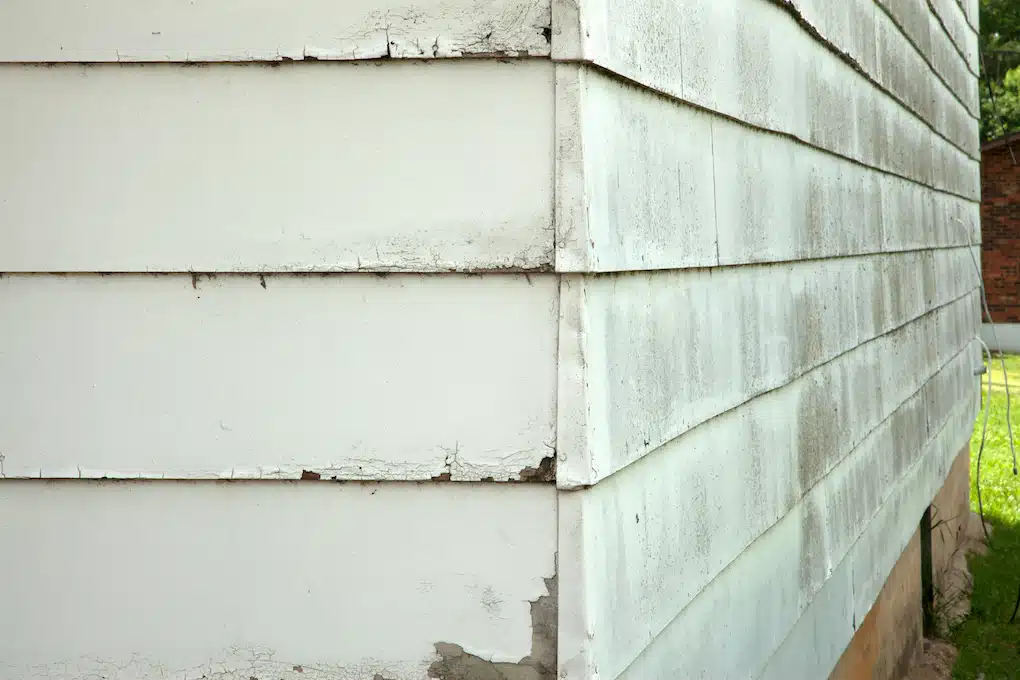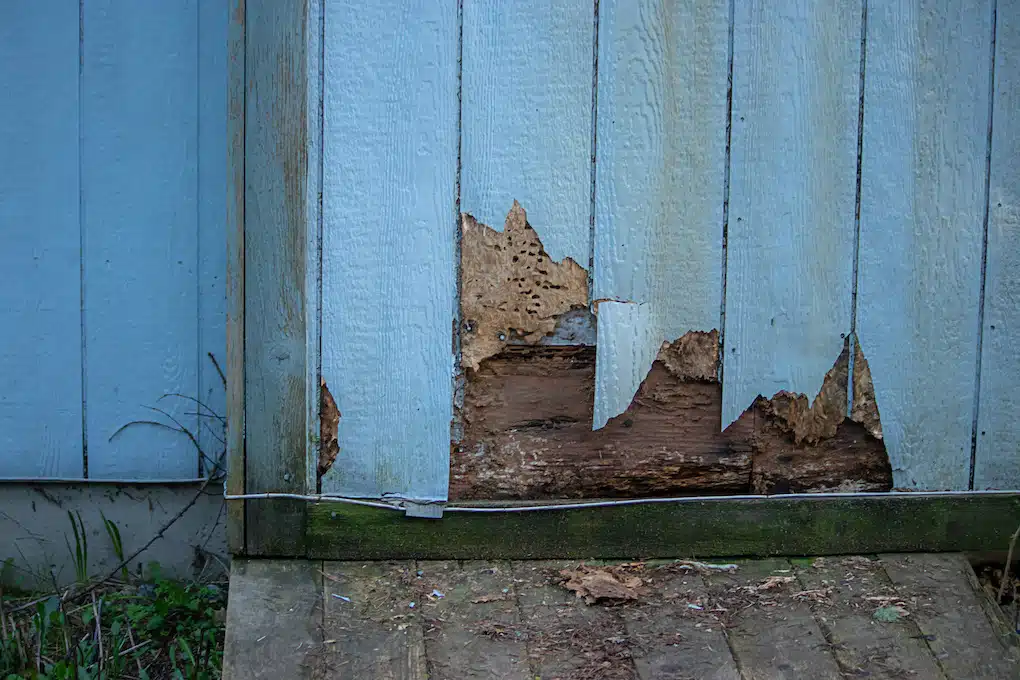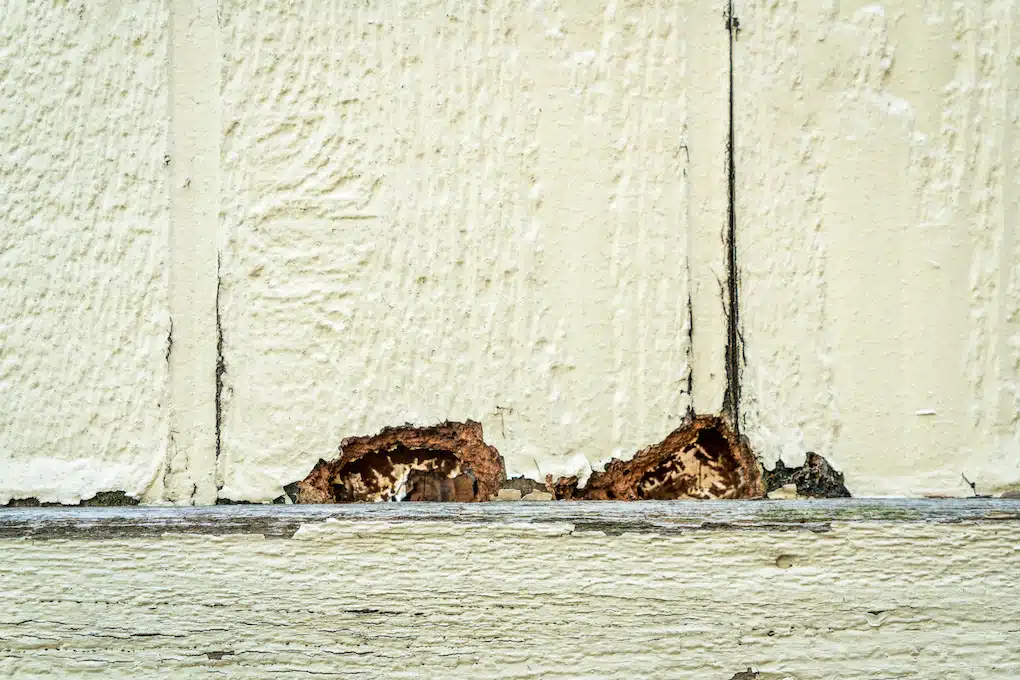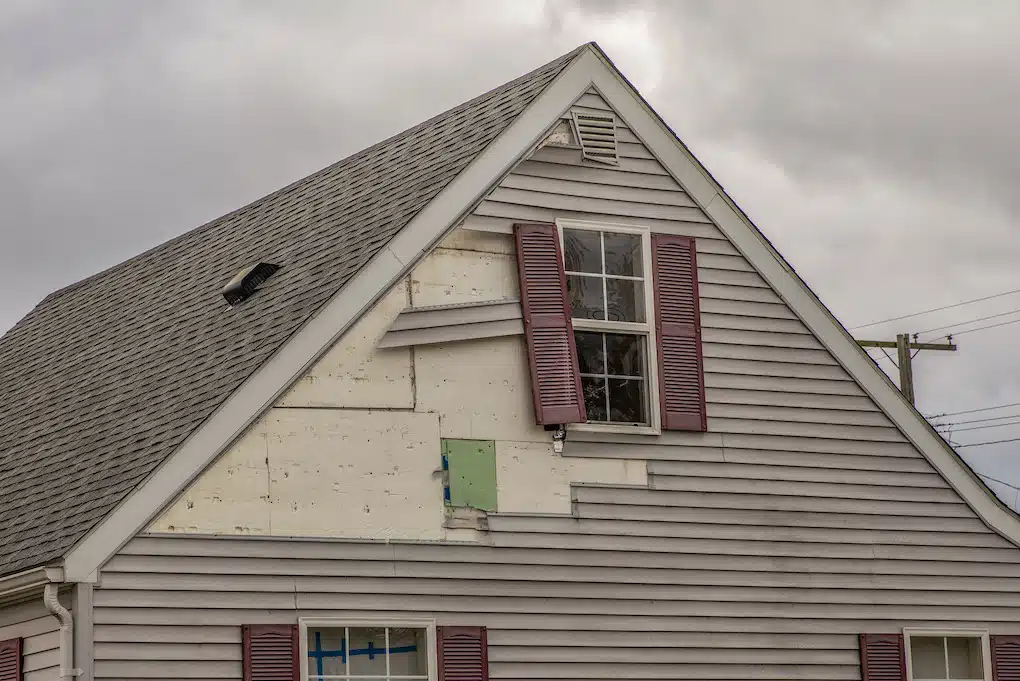Did you know some types of siding, such as stucco, can last for more than 50 years? However, the most common types of siding, such as cedar, aluminum, metal, and vinyl have an average lifespan of about 30 years.
But how can you tell when it’s time to replace siding on a house?
Today we’re going to look at 10 signs that your siding is ready to be replaced.
10 Signs It’s Time To Replace Siding On A House
1. Dry Rot

The first thing you should look for, especially in older homes, is dry rot. There are some specific things you can look for if you suspect dry rot.
Look for texture changes, brittleness in wood, and fluffy white patches that can spread across your siding. Unfortunately, there is no way to treat dry rot, so you’ll have to replace your siding if this is the case.
2. The Need to Repaint too Often
It’s not uncommon to paint your house every 10 years or more —especially if you’re wanting to keep the paint colors looking fresh. But, in some cases, you’ll notice the paint peeling away from the siding and aging within 5-7 years or less. Check out our recent post for tips on how to make your siding last longer.
This is due to the old and worn-out siding. As the siding ages, the paint won’t adhere to the surface, you’ll need to paint much more frequently.
3. Warped or Wet Rot

If you walk along your house and notice bulges in the siding or significant shifts in the structural character, your siding has most likely become warped due to wet rot.
Without proper siding, you might encounter water leaking into your home. In most situations, wet rot is caused by storm damage or an unusually damp climate. In other instances, it can happen if the siding gets too old and is no longer able to keep the water out.
Be sure to quickly replace any wet rot as it can spread deeper into your home and damage the structural integrity, which often costs much more than new siding.
4. Loose or Cracked Siding
Cracked siding isn’t too difficult to spot. When your siding is cracked, there is a higher chance of water damage and moisture build-up, which will cause rot. Due to these cracks, moisture will cause the siding to become loose.
Fixing cracked siding panels will enhance your home’s curb appeal and keep you and your family better protected from water damage.
5. Moisture Indoors
One of the main jobs of siding is keeping what’s outside, outside. Especially during the rainy seasons. If you notice that condensation has built up indoors, it can be caused by bad or old siding that can no longer keep out moisture.
If you notice an exterior wall or ceiling with unusual signs of moisture, be sure to call a professional to take a look at it and determine if the siding is the cause.
6. Holes in the Siding

Insects and birds can become real pests when it comes to siding. As your siding ages and some of the inhibitors such as paint or stain fade away, you can expect these critters to attempt to get into your siding. And after small insects get in, birds will be next as they seek to find their next snack.
Having holes is a sign that your siding is getting old and needs to be replaced.
7. Fading in the Color
If your siding begins to fade, it can be a sign that the waterproofing has come close to the end of its lifetime. This is a great time to look into replacing your siding.
Looking out for worn-out siding can allow you to get your new siding on to prevent any water damage.
8. Bubbling
Bubbling can be caused by moisture and sometimes by the sun as well. Bubbling is common sometimes before the siding starts to peel. If you’re able to catch bubbling before it changes to peeling, you’ll be able to keep your curb appeal in tip-top shape.
9. Getting Ready to Move?
While it’s not something that you can spot based on damage, it might be a good idea to upgrade your siding if you’re getting ready to move. Like roofing, upgrading your siding can add significant value to your home. We cover all the different siding options for your home in one of our recent posts.
It’s a significant advantage to buyers when they do not have to upgrade or have the siding done within the first 10 or more years. This cuts out a lot of risk for buyers and will definitely increase the chances of selling your home more quickly.
10. Weather Damage

Finally, weather damage can be one of the leading causes of these problems. That’s why it’s essential to be able to spot the signs before more damage is done.
In an event of storm damage, you might notice bits and pieces of material lying around. Sometimes in the form of dented or broken siding pieces. And other times, whole pieces of siding can be torn off by the wind. Be sure to check your home after every major storm.
Siding Repair Services In Virginia You Can Trust!
We hope that you’ve found this post helpful and if you require new siding, you can turn to WISA. We’re here for you and we truly value our customers. You can contact us for a free consultation or give us a call with any questions you might have about our process.